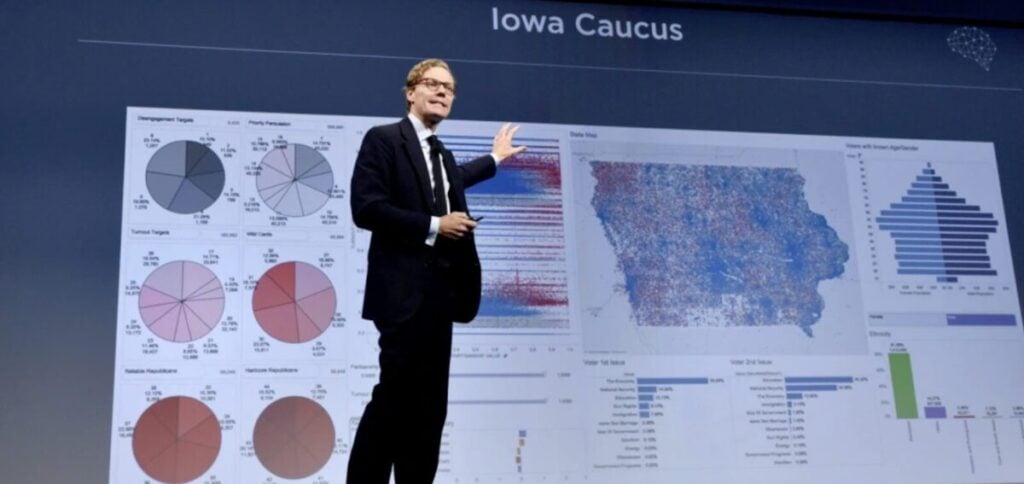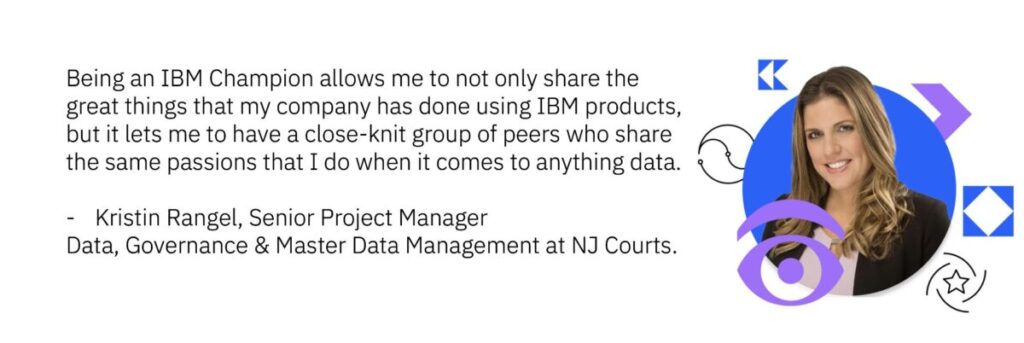Imagine a world where every interaction between a brand and its audience is not merely a touchpoint but a genuine connection — a moment that feels personal, engaging, and relevant.
This is where influencer marketing is heading, driven by a powerful shift towards authenticity, technology, and data-driven strategies.
In the October 2024 Influencer Marketing Report (based on 247 surveyed marketers), we witnessed a profound transformation unfolding across the digital landscape. We are not merely observing trends but witnessing the disruption of conventional marketing norms, guided by the preferences of Gen Z marketers and the integration of technology like AI.
The question for brands and marketers is no longer about whether to use influencers but about how to forge deeper, more authentic relationships that cut through the noise of an increasingly saturated market. This is the moment where thought leaders and Key Opinion Leaders (KOLs) in the B2B sector especially emerge as the driving force behind these changes, shifting the focus from follower counts to genuine impact and trust.
Key Findings from our October Report
How “Biden and Trump” School Us All on Influencer Marketing
Gary Vaynerchuk recently pointed out on national TV that
“Washington is sometimes ahead of Madison Avenue. I think the real punchline is that Fortune 500 companies are grossly under-investing in influencer marketing.”
Imagine the stakes: the most significant political campaigns in history, where winning or losing could reshape entire nations, hinge not on traditional media buys or mass-market ads but on the ability to create authentic connections through influencers.
The ongoing presidential campaigns have underscored a fascinating reality: influencers are not just a tool in the marketing toolkit; they are the game-changers. The influence strategies of Kamala Harris, Donald Trump, and Joe Biden are not merely interesting case studies; they are a blueprint for the future of marketing. This shift has left Fortune 500 companies scrambling, as political campaigns have shown them what it truly means to be innovative in the digital age.
The unsettling irony here is that while corporate giants are often heralded as the bastions of innovation, it’s political campaigns — entities not typically known for agility or trendsetting — that have mastered the art of influencer marketing. They have seamlessly integrated influencers into their communication strategies, leveraging them not just for visibility but for authenticity, engagement, and real influence over public opinion.
4.3 Million Views, 300K Downloads, and a 31.88% Conversion Rate
So, while Gary V might be shaking his head at how underutilized influencer marketing is in the corporate world, NeoReach just quietly schooled everyone on how it’s done.
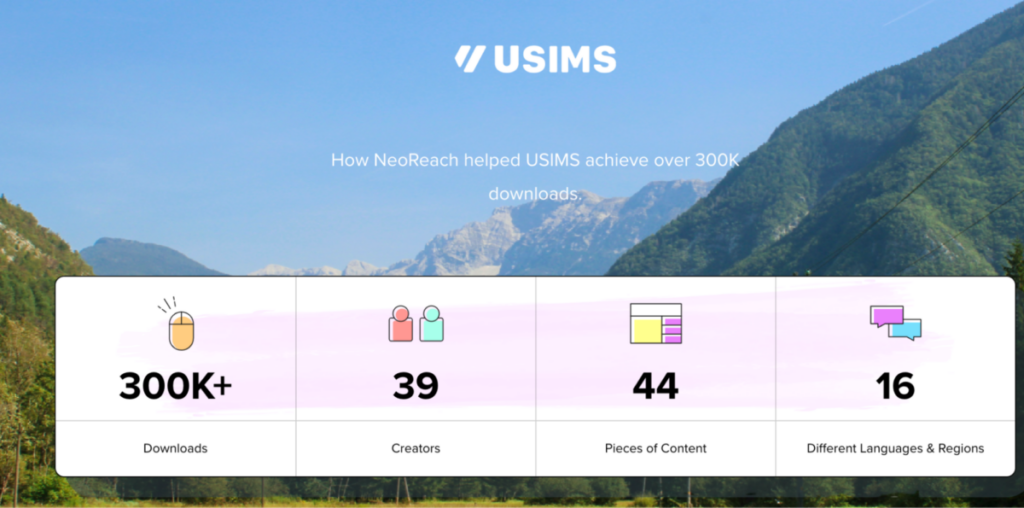
When USIMS, a fresh contender in the eSIM market, found themselves squaring off against giants like Verizon and T-Mobile, they knew they couldn’t just dabble in the influencer game—they had to rewrite the rulebook.
USIMS needed more than visibility—they needed to own the conversation in a market saturated by industry titans. Their goals were ambitious:
- Go Global: Enter 16+ new markets and make USIMS a household name
- Scale Revenue: Convert those downloads into long-term, engaged customers
NeoReach’s Magic Formula
NeoReach went beyond the basics, crafting a multi-layered influencer strategy that brought precision and scale to the table. Here’s how they turned a daunting challenge into a roaring success:
1. “Always-On” Influencer Activation: NeoReach activated 39 creators across 16 different languages and regions to promote USIMS.
@alex.broggi No matter how far from home, @USIMS has me covered. Download USIMS to stay connected wherever you are. #ad #usims #travelessentials #esim #USIMSeSIM #explorer ♬ original sound – Alex Broggi
2. Leveraging Macro Moments: NeoReach seized on global events like the Paris Olympics to create memorable content moments.
3. Blending Creativity with Data-Driven Precision: NeoReach didn’t just rely on gut instinct; they integrated SEO, ASO (App Store Optimization), and paid media strategies to fuel influencer content distribution.
4. Platform-Specific Tactics: Understanding that every platform plays a different role, NeoReach strategically onboarded influencers across Instagram, TikTok, and YouTube.
The Results?
NeoReach’s holistic strategy didn’t just meet the KPIs—it smashed them. The campaign’s success was driven by a combination of authentic influencer storytelling, data optimization, and precise targeting that created a seamless synergy across digital channels.
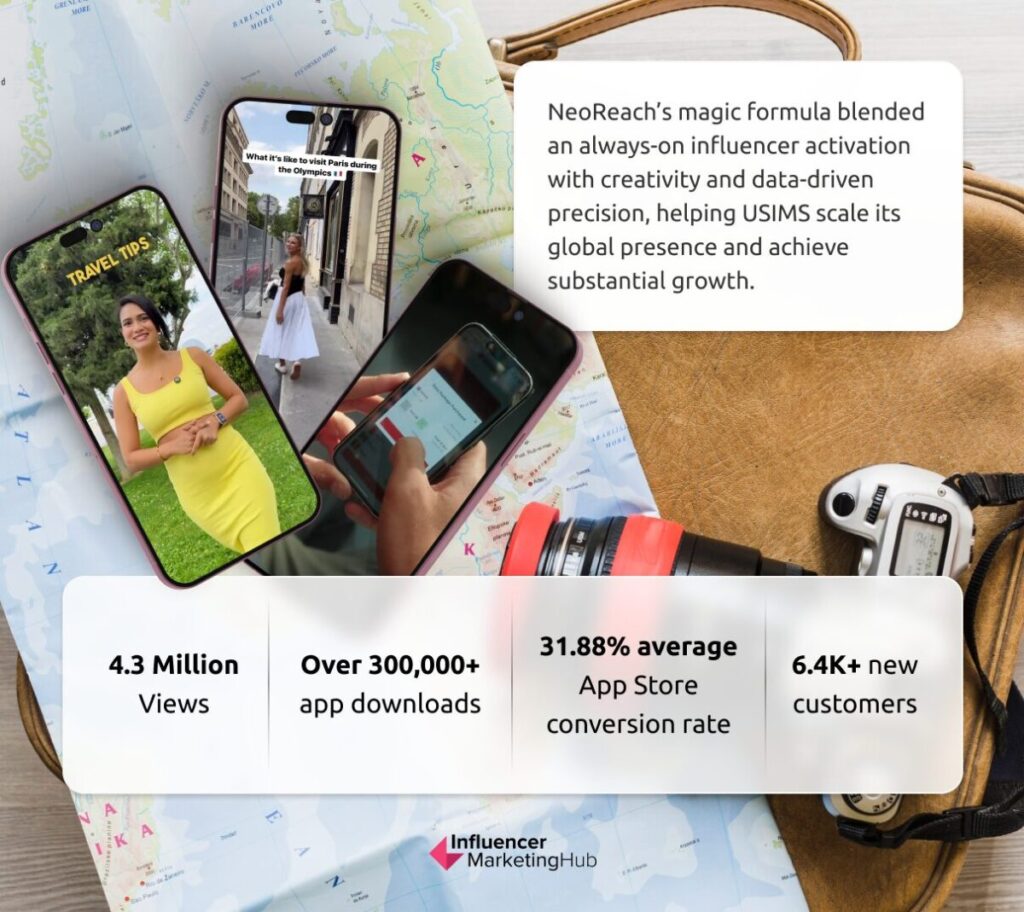
- 4.3 Million Views
- Over 300,000+ app downloads
- A 31.88% average App Store conversion rate
- 6.4K+ new customers
NeoReach’s campaign wasn’t just a win for USIMS; it was a masterclass in influencer marketing done right. They proved that it’s not about the biggest budgets or the flashiest influencers—it’s about smart targeting, genuine storytelling, and leveraging influencers who can truly move the needle.
Read the full case study here.
From Super Influencers to Nano-Influencers and Thought Leaders
The October 2024 report highlights a strategic pivot towards nano-influencers and niche creators, emphasizing their authenticity and deep connections with highly engaged audiences. Compared to our findings from July, the preference for nano-influencers has grown significantly, with 53.4% of marketers now considering them more effective—a notable increase from the 43% who indicated a similar preference just a few months earlier. This upward trend suggests a deepening appreciation for the qualitative aspects of influence, where trust, relevance, and engagement take precedence over sheer follower counts.
In the B2B marketing landscape, the rise of thought leaders and Key Opinion Leaders (KOLs) continues to reshape how brands build credibility and drive industry conversations. While July’s data already pointed to the importance of these influential voices, the momentum has only intensified. With 82% of B2B buyers conducting online research before engaging with a brand, these thought leaders have become even more critical, moving beyond mere brand amplification to shape decision-making processes and establish authority in their respective fields.
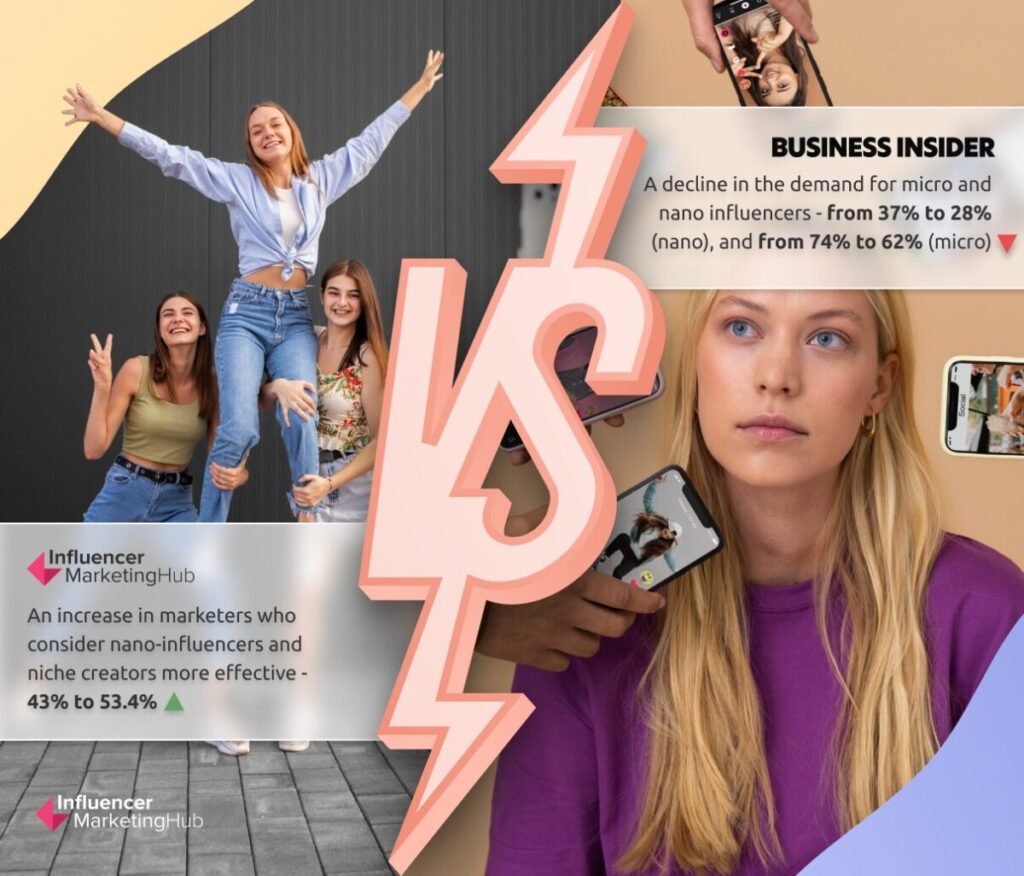
However, the recent Business Insider findings tell a different story, one that seems to diverge from the emerging trends we observed. Their report suggests a swing back to macro and mega influencers, driven by increased interest in celebrity partnerships. According to their survey, the share of marketers planning to work with celebrity influencers increased from 30% to 40% between 2023 and 2024, while interest in mega influencers rose from 48% to 60% over the same period. Meanwhile, the demand for micro and nano influencers reportedly declined, with nano-influencer engagement dropping from 37% to 28% and micro influencers from 74% to 62%.
While these statistics paint a picture of marketers gravitating towards bigger names, we challenge the underlying assumptions in this analysis. Business Insider’s findings seem narrowly focused on cost-related concerns, highlighting that micro-influencer rates have increased by up to 20%, leading brands to opt for larger influencers. Yet, they largely overlook a critical factor: Return on Investment (ROI). In influencer marketing, the cost of engagement is only part of the equation; the ability to drive conversions, build trust, and establish long-term relationships often delivers the most significant value. By placing heavy emphasis on “reach” and immediate visibility, their approach neglects the deeper impact that nano and micro influencers can have on building genuine connections with audiences.
Data is the New Gold in Influencer Marketing
Today, we as consumers have a low tolerance for fluff — they crave data-backed insights and strategies that deliver tangible results, especially as Marketers. And let’s be real, if there’s one entity that proved the power of data in influencer marketing, it was Cambridge Analytica. Love it or hate it, they didn’t just dip their toes in the influencer game; they cannonballed into the pool and changed the rules for everyone. With their controversial use of data to micro-target millions of voters, they showed us that when you hold the right cards—meaning, the data—you can influence the masses with a precision that most brands still struggle to understand.
The October report reveals that brands today are increasingly integrating AI and sentiment analysis to refine their influencer campaigns, signaling a shift towards more precise, data-driven decision-making. However, this reliance on AI isn’t without its challenges, particularly around maintaining the human touch in influencer-driven interactions.
AI’s potential lies in its ability to streamline operations, identify trends, and optimize content creation. Yet, as we learned from Cambridge Analytica, the real game-changer is not just in the ability to process data, but in knowing how to wield it. The challenge, however, is to balance this technological advancement with authenticity. Our October survey data indicates that 54.8% of marketers view AI favorably for enhancing efficiency.
The Cambridge Analytica case should serve as a lesson for all marketers: Data is gold, but the way you use it is what truly defines your success. While AI and machine learning offer new avenues for understanding audience behavior and customizing content to their needs, the real art lies in making that data-driven approach feel human, relatable, and trustworthy. Because at the end of the day, it’s not just about reaching people—it’s about connecting with them in ways that matter.
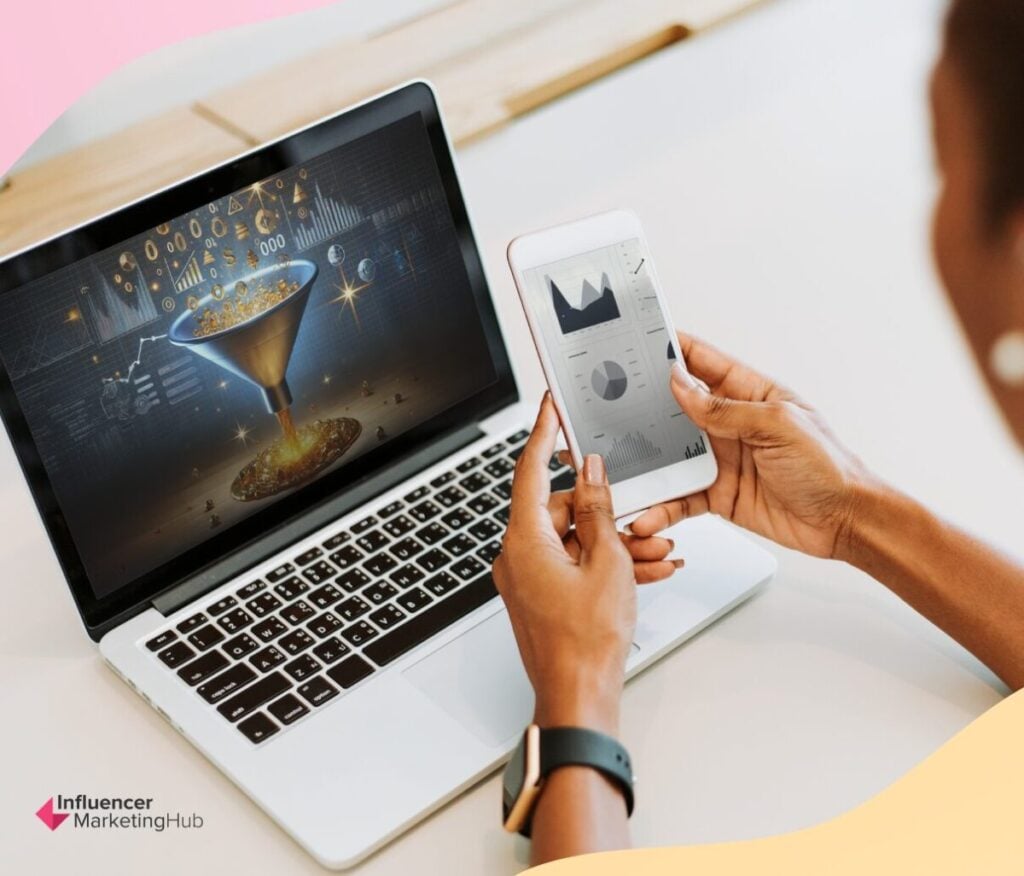
Influencer Fatigue: Redefining Engagement in a Saturated Landscape
One of the most thought-provoking revelations from the October survey is the growing phenomenon of influencer fatigue. With 52.1% of marketers acknowledging a rise in influencer fatigue, particularly towards mega-influencers, it’s clear that the industry is approaching a critical inflection point. Consumers, bombarded by branded messages and repetitive content, are becoming more selective about who they trust and engage with.

To counter this, brands are pivoting towards micro and nano-influencers, whose content often feels more genuine and relatable. This shift is more than just a tactical response; it’s a strategic recalibration that aligns with the evolving consumer preference for relatability and relevance. Marketers who prioritize these smaller, more engaged communities are not only future-proofing their strategies but also laying the groundwork for more sustainable and impactful influencer relationships.
While our survey reveals concerns about influencer fatigue at the macro level, an article recently published by Jaxon Parrott highlights that influencer marketing remains one of the most effective tools in combating ad fatigue in specific sectors. The key difference lies in how brands are deploying these strategies. In areas like cybersecurity, the focus is on trusted voices and influencers with niche expertise, rather than purely on reach or follower counts.
Today, more than ever in the B2B space, it’s about connecting brands with industry experts who can sway key decision-makers like CTOs and CMOs at Fortune 500 companies. Imagine the influencer you respect most on LinkedIn continuously endorsing a software solution tailored to your industry—how much more would that resonate than a standard ad?
These platforms are moving towards high-trust, native placements that blend seamlessly into expert content, making recommendations feel less like a sales pitch and more like genuine advice. It’s a game-changer in the influencer landscape, turning marketing into an authentic conversation that builds real credibility with those who matter most.
The Evolution of B2B Influencer Marketing: Thought Leaders and KOLs Lead the Charge
Forget the old-school approach of chasing big names with huge followings; the real game-changer in B2B influencer marketing is about finding those who can genuinely shape industry conversations—thought leaders and Key Opinion Leaders (KOLs) with deep expertise. In fact, 87% of B2B buyers say they trust content from these industry experts over brand-produced materials. And that’s no small detail; it’s a clear signal that brands need to focus on those who actually influence decision-making.
Let’s talk about how IBM and Microsoft are not just riding the influencer marketing wave; they’re creating it. These tech giants have mastered the art of blending internal influencers (their own employees) with external thought leaders to build credibility and trust.
- IBM’s Influencer Insights Program: IBM isn’t just looking for external voices; they’re turning their own team into influencers. Through training and structured programs, IBM’s internal experts are actively sharing their knowledge on platforms like LinkedIn, positioning themselves as trusted advisors within the tech industry. They’ve also partnered with thought leaders like Daniel Newman to generate content on AI and digital transformation, boosting their influence and credibility.
- Motivation and Engagement Systems at IBM: What sets IBM apart is how they create a culture of influence among their employees. They incentivize participation through recognition systems, like the “IBM Influencer” badge, motivating employees to share their expertise and contribute to industry discussions. This not only amplifies their reach but also solidifies IBM’s authority as a thought leader, without always relying on external voices.
- Microsoft’s MVP Program: Microsoft’s approach is all about co-creating with their community. The MVP Program taps into a network of tech experts who aren’t just influencers; they’re co-creators in product development. These influencers help Microsoft by sharing feedback, creating early product content, and hosting educational webinars that resonate deeply with the tech community. This strategy not only drives product adoption but also positions Microsoft as the go-to name in AI and cloud innovations. The data speaks for itself—this collaborative strategy has significantly boosted Microsoft’s industry influence and community engagement.
Here’s the reality: B2B brands need to move beyond the outdated tactics of broad visibility and instead focus on credibility. Imagine seeing your most-followed LinkedIn expert continuously endorsing a solution tailored to your industry—it’s more than an advertisement; it’s a powerful validation that shapes perceptions.
This focus on trust is supported by the fact that 81% of decision-makers trust peer recommendations over any form of advertising. Brands like SAP have leveraged this insight by collaborating with influencers on thought leadership content like AI whitepapers, leading to a 400% increase in lead conversions from these targeted efforts. This example demonstrates the tangible impact of using influencers to co-create high-value content that resonates with B2B decision-makers.
Managing Sentiment: Turning Criticism into Growth Opportunities
Another focal point of the October report is the proactive approach brands are taking to manage negative sentiment in their campaigns. With nearly 47.9% of marketers actively engaging with audiences to resolve issues and 31.8% increasing transparency about campaign processes, it’s clear that authenticity and trust are at the forefront of modern influencer strategies. This transparency is essential in turning potential backlash into opportunities for growth and deeper engagement.
Brands that successfully navigate this terrain understand that transparency is not a buzzword but a strategic tool for building long-term relationships. By addressing concerns openly and adapting their content strategy based on feedback, they can turn critics into advocates and foster loyalty in an increasingly skeptical audience.
The Integration of Shoppable Content: Converting Engagement into Revenue
The rise of shoppable content formats is another key trend, transforming how brands interact with consumers and drive conversions. With 45.3% of marketers regularly using shoppable content formats and 52.9% seeing increased conversion rates as a result, the seamless integration of e-commerce into social media platforms is revolutionizing the customer journey.
Shoppable content reduces friction in the purchasing process, creating a more intuitive shopping experience directly from the influencer’s content. This approach not only enhances user experience but also provides brands with valuable data to refine their strategies and improve ROI. The future of influencer marketing will undoubtedly see more brands embracing these formats to connect with audiences in a way that is both engaging and transactional.
October Trends in Influencer Marketing: A Data-Driven Analysis
(First Party Data by Influencer Marketing Hub Monthly Survey)
As the influencer marketing landscape continues to evolve, driven by technology, data insights, and shifting consumer preferences, our October 2024 survey of 247 marketers offers a detailed snapshot of current industry trends. This report goes beyond surface-level observations, diving deep into the latest shifts in influencer marketing strategies and providing an in-depth analysis of the survey results. By comparing these insights with data from July 2024, we identify emerging patterns, highlight key trends, and outline actionable strategies that can help brands and marketers stay ahead in this ever-changing landscape.
Allocation of Marketing Budget to Influencer Marketing
Understanding budget allocation is crucial in determining the strategic priorities of marketers. According to the October 2024 survey, budget distribution remains diversified, reflecting varying levels of commitment to influencer marketing. The breakdown of budget allocation is as follows:
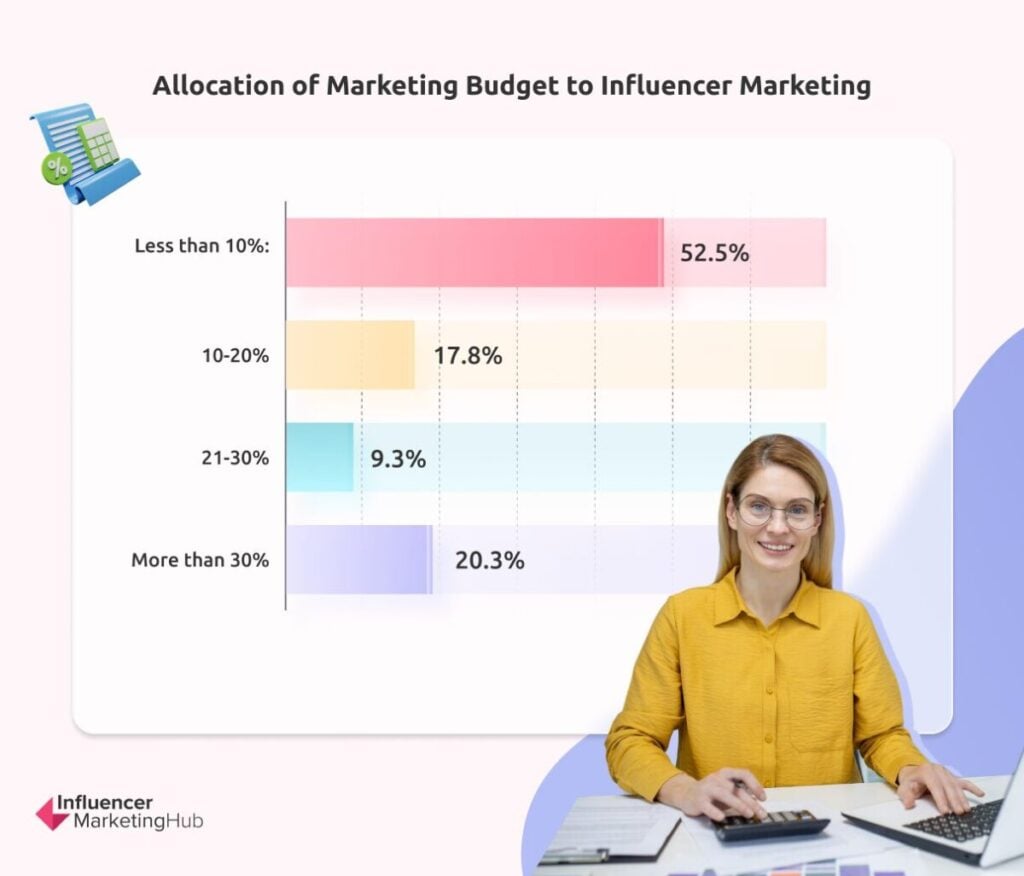
- Less than 10%: 52.5%
- 10-20%: 17.8%
- 21-30%: 9.3%
- More than 30%: 20.3%
Comparative Analysis with July Data
In July, the distribution of budget allocations showed a marginally cautious approach but with some indication of confidence in influencer marketing’s ROI. During that period:
- Less than 10%: 44.3%
- More than 30%: 24.5%
The October data indicates an increase in the proportion of marketers allocating less than 10% of their budget to influencer marketing, rising from 44.3% in July to 52.5%. This shift suggests a growing conservative approach, possibly driven by economic uncertainties or the need for more measurable ROI from influencer campaigns. The decline in allocations over 30% from 24.5% in July to 20.3% in October further supports this cautious trend.
- Stability with Caution: The overall allocation trends indicate a stable yet cautious sentiment towards influencer marketing investment.
- Efficiency-Driven Investment: Brands might be redirecting their budgets towards channels that offer clear and immediate returns on investment, emphasizing the importance of measurable impact in their strategies.
Platform Preferences in Influencer Marketing
Platform selection continues to be a critical component of influencer marketing strategy. The October survey results highlight TikTok as the dominant platform, followed by Instagram, YouTube, and Facebook.
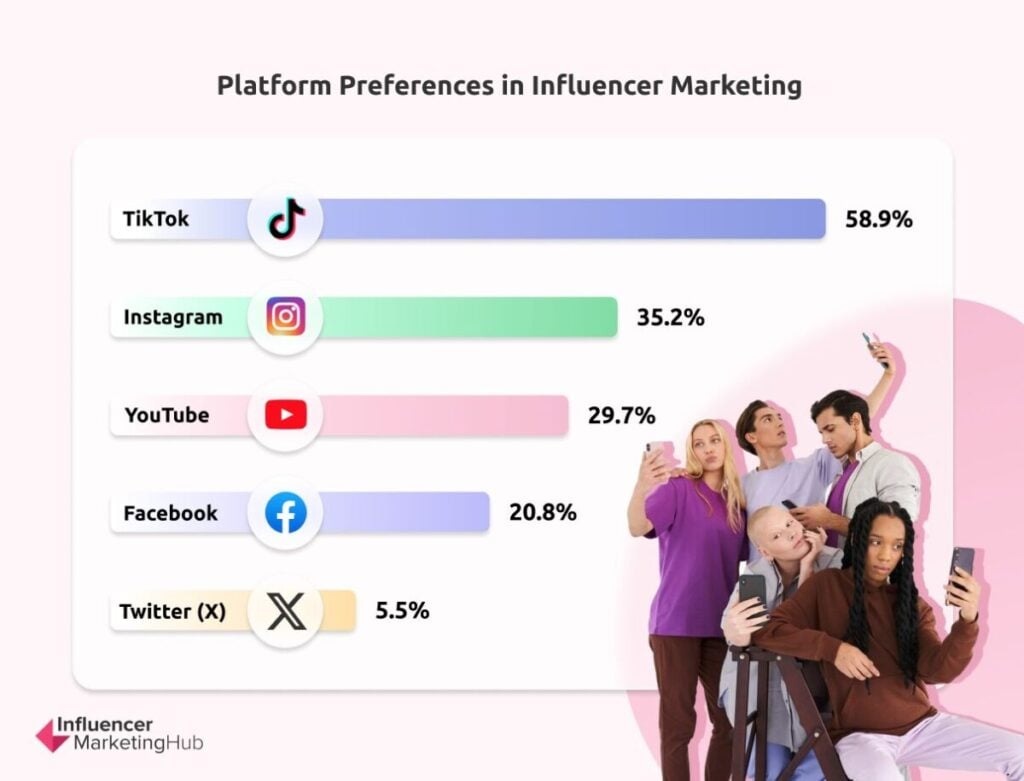
- TikTok: 58.9%
- Instagram: 35.2%
- YouTube: 29.7%
- Facebook: 20.8%
- Twitter (X): 5.5%
Insights and Shifts from July
The comparison with July’s data reveals consistent trends with a notable emphasis on TikTok’s prominence:
- TikTok (July): 58.1%
- Instagram (July): 42.4%
- YouTube (July): 36%
Although TikTok remains the top choice for influencer campaigns, Instagram and YouTube have seen slight declines in preference since July. This shift could indicate a recalibration of platform strategies, with marketers favoring platforms that drive higher engagement rates and resonate with Gen Z audiences, who dominate TikTok.
- Continued Dominance of TikTok: TikTok’s sustained popularity underscores its effectiveness in reaching younger demographics and its innovative features like TikTok Shopping and AI-driven tools.
- Strategic Diversification: The slight decline in Instagram and YouTube usage suggests a strategic pivot towards platforms that provide better alignment with audience behavior and engagement patterns.
Emotional Sentiment and Analysis in Influencer Campaigns
Emotional sentiment analysis has become a key tool in assessing the impact of influencer campaigns. The October survey highlights how brands measure and utilize sentiment data:
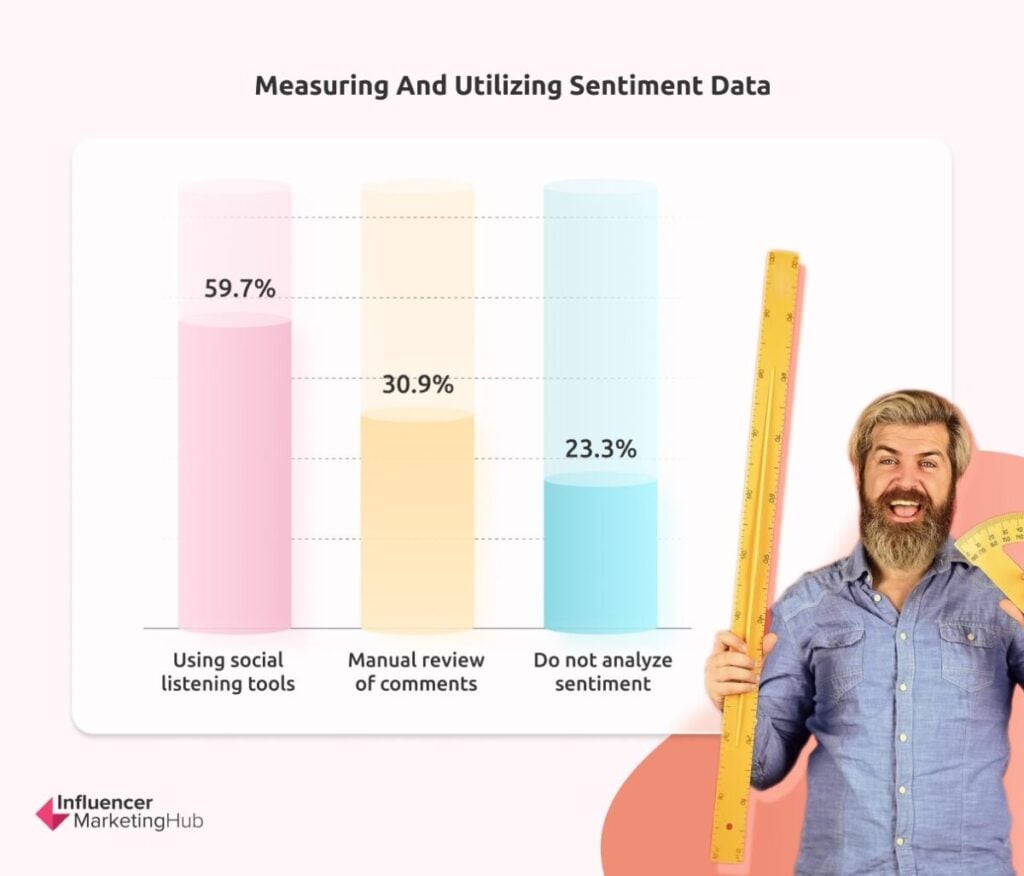
- Using social listening tools: 59.7%
- Manual review of comments: 30.9%
- Do not analyze sentiment: 23.3%
Comparative Insights with July Findings
In July, a strong focus was also placed on qualitative metrics, with brands increasingly using sentiment analysis to gauge campaign effectiveness. The reliance on digital footprints and direct customer feedback has grown, reflecting a sophisticated approach to understanding brand perception.
- Emphasis on Emotional Metrics: The increasing use of social listening tools indicates a shift towards real-time, data-driven strategies that can promptly address consumer feedback and optimize content.
- Missed Opportunities: With 23.3% of brands not analyzing emotional sentiment, there remains a significant gap in leveraging data that could provide deeper insights into customer behavior and engagement.
Effectiveness of Micro, Nano, and Macro Influencers
The October data shows a significant preference for nano-influencers, indicating their growing impact on marketing strategies:
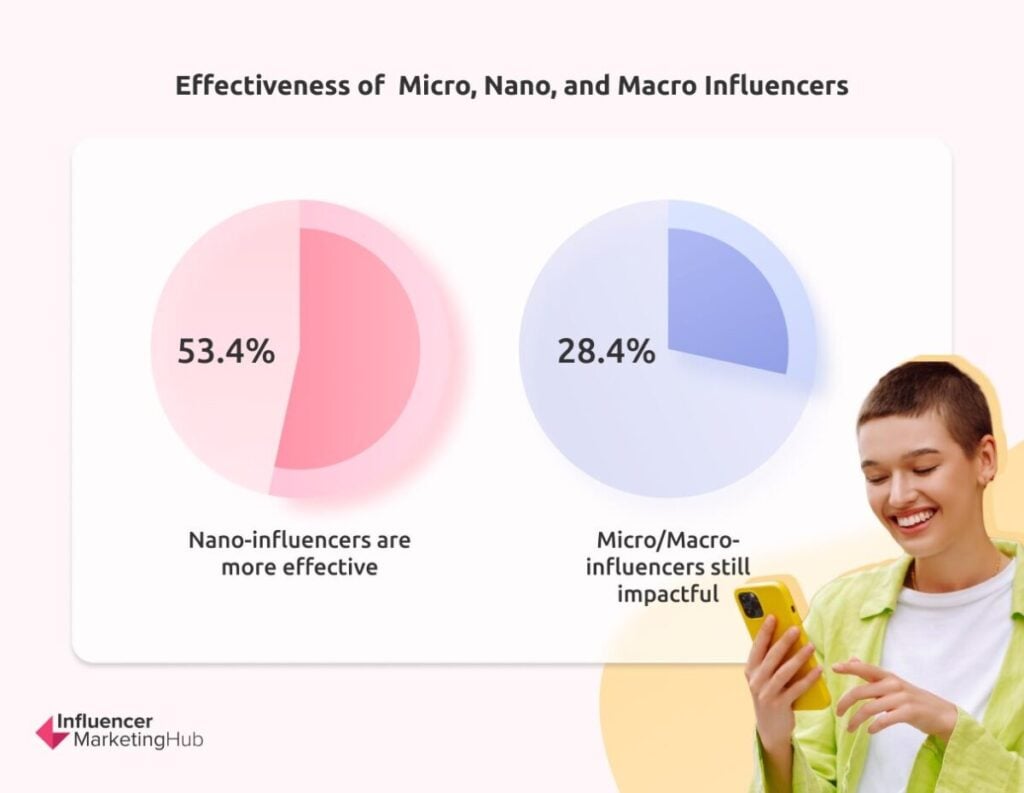
- Nano-influencers are more effective: 53.4%
- Micro/Macro-influencers still impactful: 28.4%
Trends from the July Report
The July report also noted a shift towards nano-influencers, with 43% of respondents increasing their use of these smaller-scale influencers. This consistent trend points to a broader movement within the industry towards more authentic and relatable influencer partnerships.
- Rise of Nano-Influencers: The preference for nano-influencers is driven by their perceived authenticity and stronger engagement rates, making them valuable assets in fostering trust and building genuine connections.
- Strategic Budget Reallocation: Marketers are reallocating their budgets from macro to nano-influencers, reflecting a focus on achieving higher ROI through personalized interactions with niche audiences.
AI Integration in Influencer Marketing
AI’s role in enhancing influencer marketing strategies remains a hot topic, with varied sentiments observed in the October data:
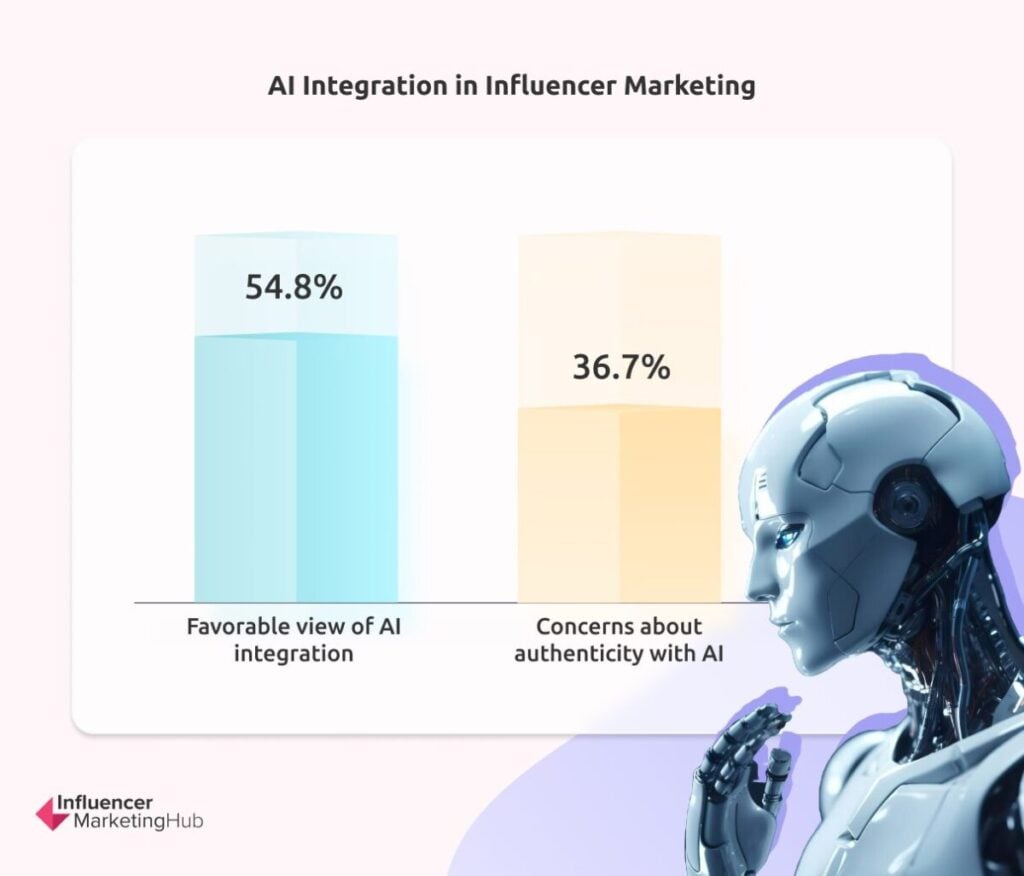
- Favorable view of AI integration: 54.8%
- Concerns about authenticity with AI: 36.7%
Evolution from July Data
In July, AI’s potential to streamline operations and improve campaign performance was widely recognized. However, the concerns regarding AI’s impact on authenticity remain consistent, highlighting an ongoing debate within the industry.
- AI as a Double-Edged Sword: While AI tools are celebrated for their efficiency in influencer identification and content optimization, the challenge lies in balancing technology with the need for genuine, human-centric engagement.
- Future Innovations: The continued development of AI features like TikTok’s Symphony is expected to reshape the landscape, allowing for personalized and scalable influencer campaigns that do not compromise on authenticity.
Managing Negative Sentiment in Influencer Campaigns
Addressing negative sentiment is a crucial aspect of maintaining brand reputation. The October survey findings indicate the following approaches:
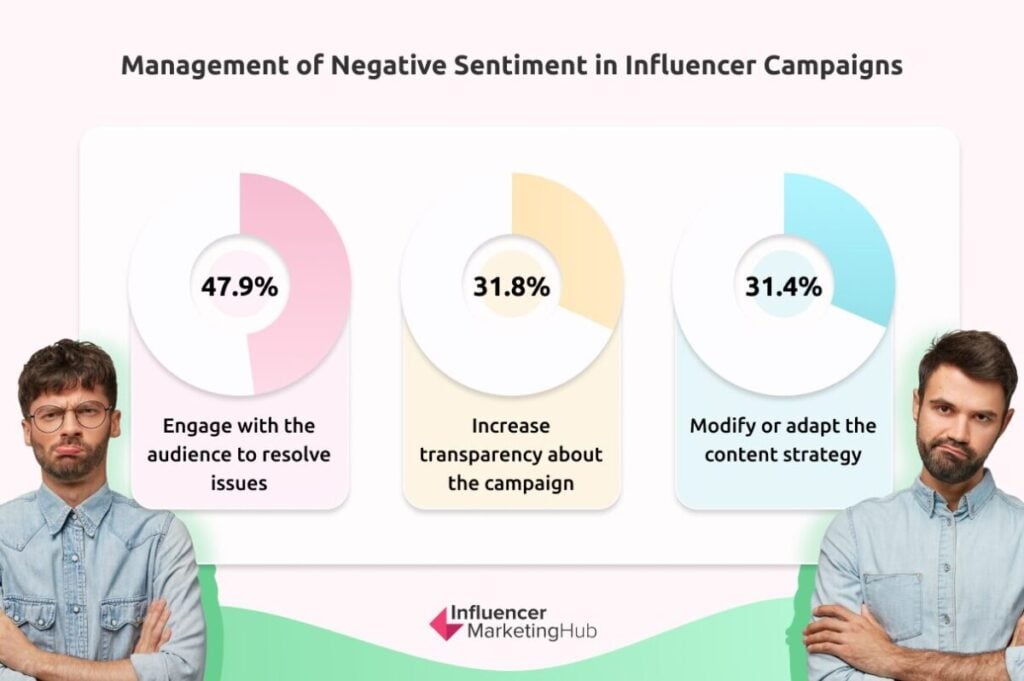
- Engage with the audience to resolve issues: 47.9%
- Increase transparency about the campaign: 31.8%
- Modify or adapt the content strategy: 31.4%
This consistent emphasis on audience engagement and transparency highlights a proactive approach towards handling negative feedback, aligning with the industry’s focus on authenticity and trust.
- Proactive Engagement: Brands that actively engage with negative sentiment are more likely to retain consumer trust and turn criticism into opportunities for growth.
- Transparency as a Strategy: Increasing transparency about campaign processes and influencer partnerships can mitigate backlash and foster deeper connections with the audience.
Influencer Fatigue and Consumer Trust
With the rise of influencer marketing, the industry is beginning to experience signs of fatigue:
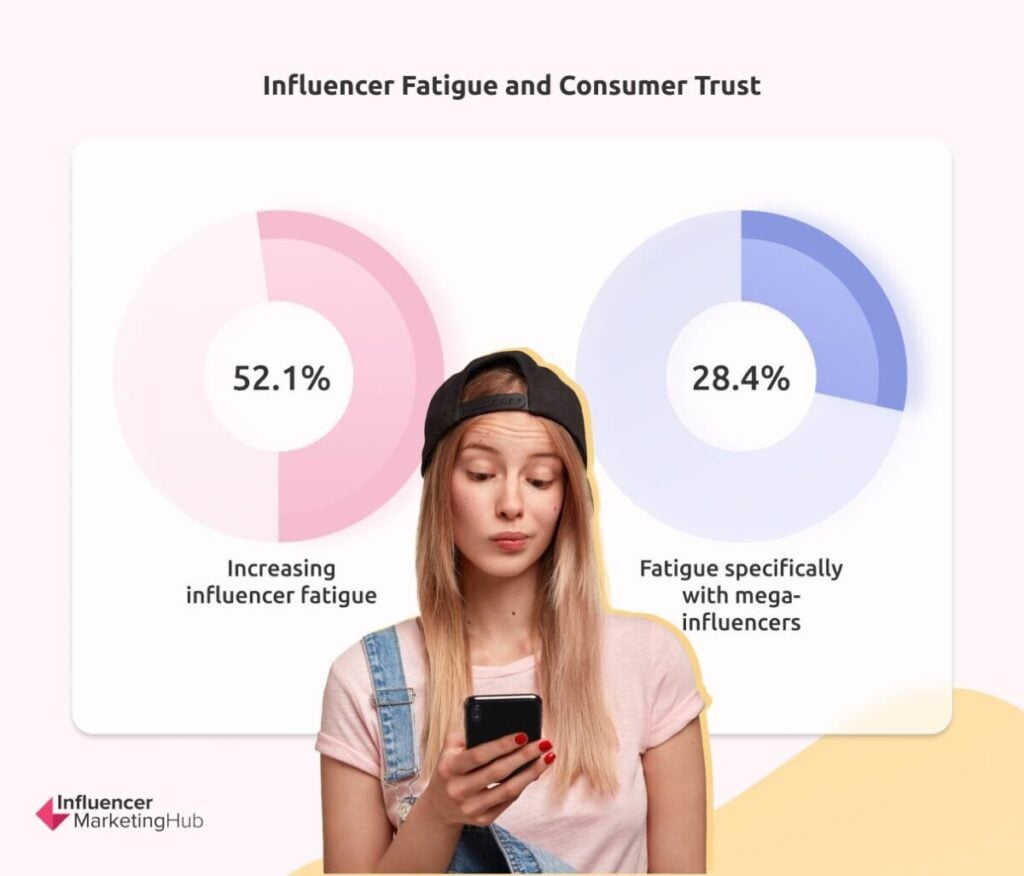
- Increasing influencer fatigue: 52.1%
- Fatigue specifically with mega-influencers: 28.4%
Insights from the July Report
July’s findings also pointed towards a saturation of traditional influencer content, emphasizing the need for fresh strategies to maintain audience engagement.
- Combatting Influencer Fatigue: Marketers must innovate by focusing on authenticity, leveraging micro and nano-influencers, and incorporating user-generated content to keep the audience engaged.
- Shift from Mega-Influencers: The declining effectiveness of mega-influencers highlights a move towards more personalized marketing approaches that resonate on a deeper level with consumers.
Shoppable Content and E-Commerce Integration
Shoppable content continues to gain traction, driving direct conversions from influencer-driven campaigns:
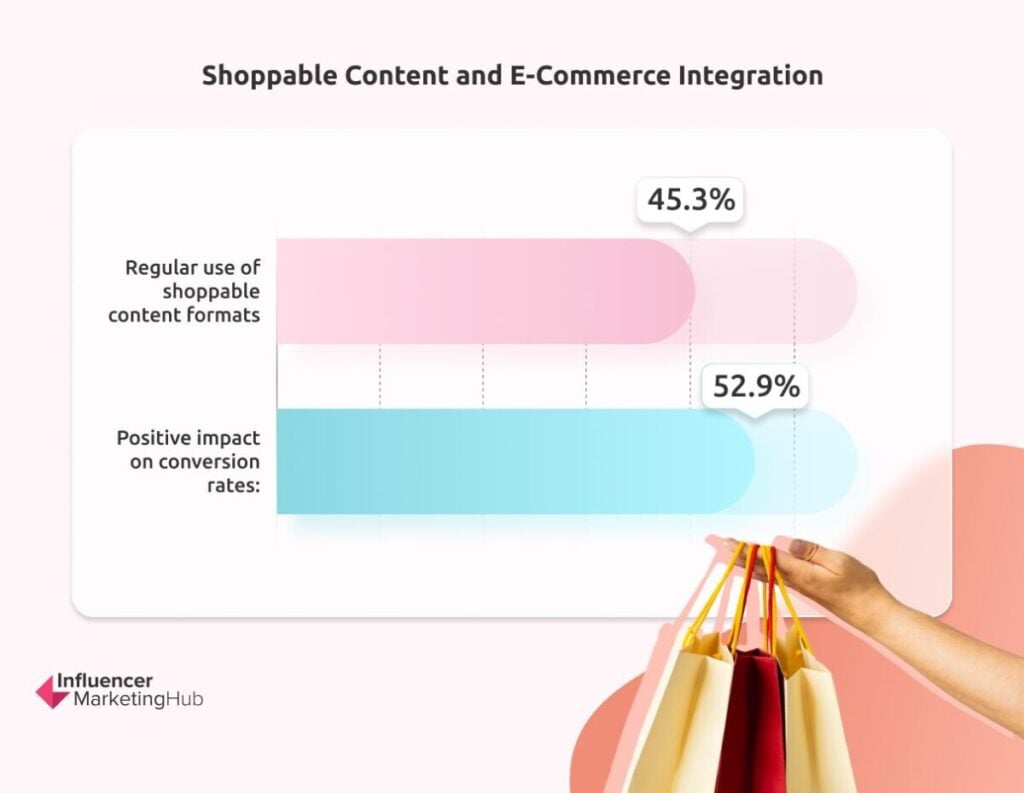
- Regular use of shoppable content formats: 45.3%
- Positive impact on conversion rates: 52.9%
Comparative Evaluation with July Trends
In July, the adoption of shoppable content formats like Instagram Checkout and TikTok Shopping was noted as a growing trend, emphasizing their role in streamlining the customer journey.
- Seamless Shopping Experiences: Shoppable content reduces friction in the customer journey, enhancing both user experience and conversion rates.
- Future Potential: As more brands adopt these formats, the ability to track influencer-driven sales and improve ROI will become increasingly refined and effective.
Generational Targeting in Influencer Campaigns
Targeting the right generational audience is a strategic focus in influencer marketing:
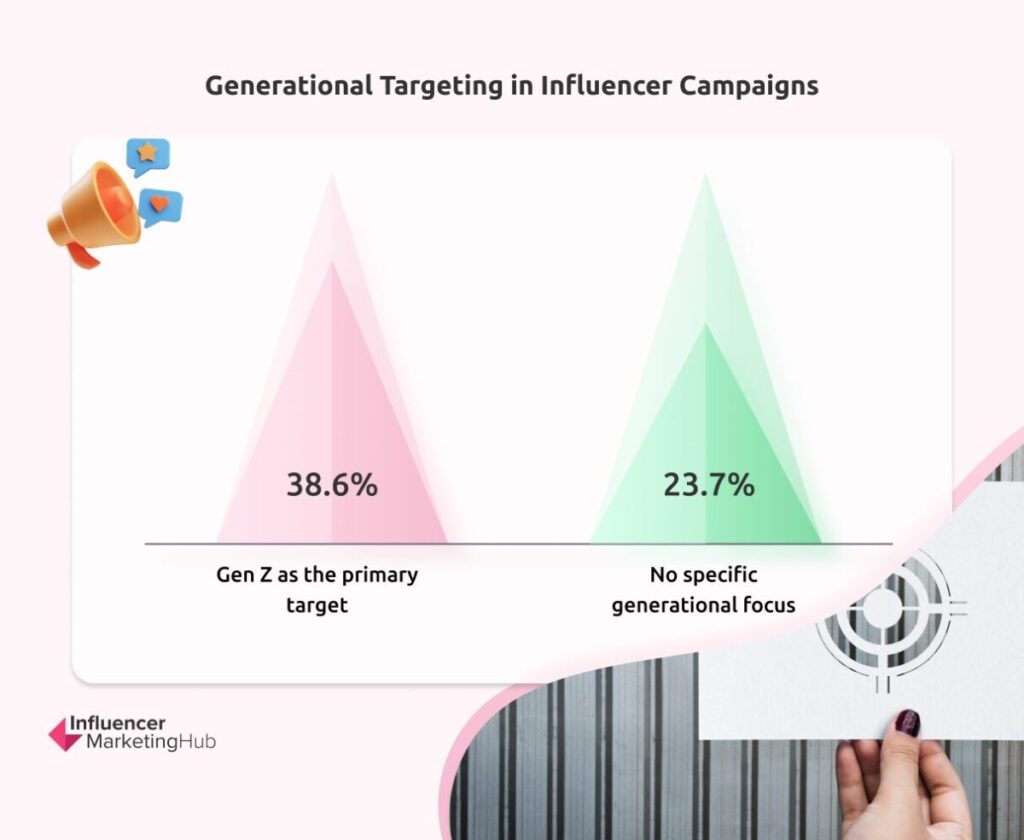
- Gen Z as the primary target: 38.6%
- No specific generational focus: 23.7%
Consistency with Prior Data
The emphasis on Gen Z continues to dominate marketing strategies, reflecting their significant presence on platforms like TikTok and Instagram.
- Gen Z Dominance: Brands focusing on Gen Z are tapping into a demographic that values authenticity, social impact, and technology-driven engagement.
- Diversification Needs: While Gen Z remains crucial, brands should not ignore opportunities to reach Millennials and Gen X through platform-specific strategies that cater to their preferences.
Strategic Timing and Platform Effectiveness
Timing is critical in maximizing influencer campaign engagement, with the survey revealing that:
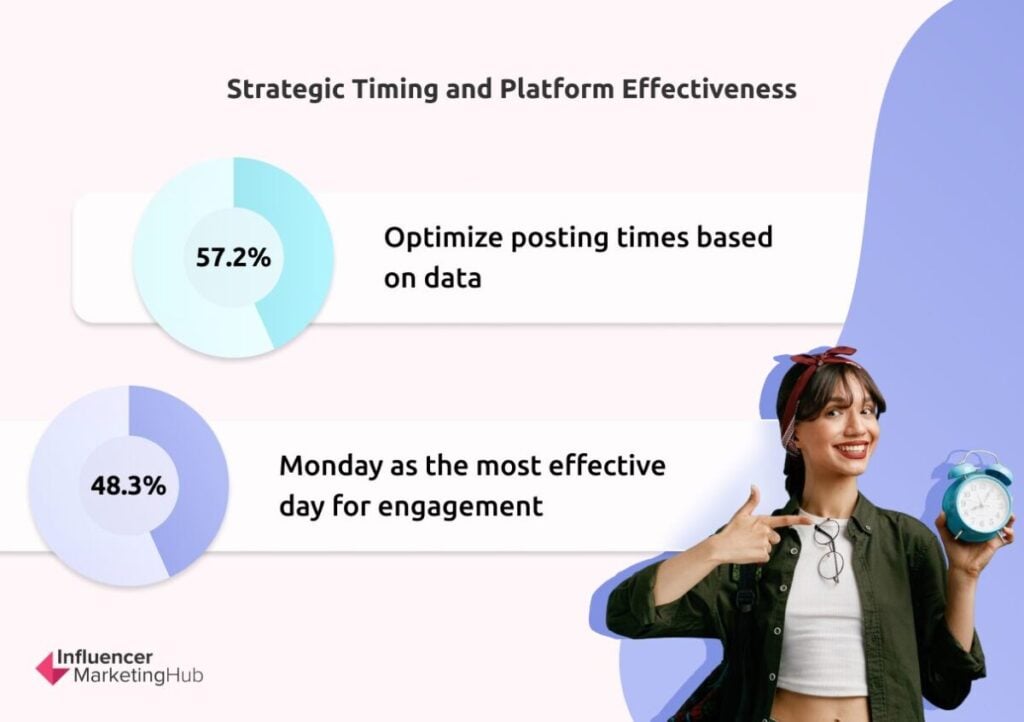
- Optimize posting times based on data: 57.2%
- Monday as the most effective day for engagement: 48.3%
Evolution from July Data
The strategic timing of campaigns, as observed in previous reports, aligns with audience behavior patterns, ensuring content reaches its peak visibility.
- Data-Driven Decisions: Leveraging data to time campaign releases ensures that brands maximize engagement during peak activity periods.
- Refinement Opportunities: Continual analysis of audience behavior will help brands refine their strategies, leading to higher engagement and improved ROI.
The Path Forward: Challenges and Opportunities
The October 2024 survey provides a clear picture of where influencer marketing is headed. As the landscape grows more sophisticated, challenges such as influencer fatigue, negative sentiment management, and maintaining authenticity amidst AI advancements will shape future strategies.
Key Challenges:
- Fragmented Attention: With consumers facing information overload, capturing attention through meaningful, authentic content is more important than ever.
- Balancing AI and Human Connection: The role of AI in influencer marketing is pivotal, yet brands must ensure that technology enhances rather than detracts from genuine audience engagement.
Opportunities:
- Leveraging Micro and Nano-Influencers: The shift towards smaller influencers presents an opportunity to foster deeper connections with niche audiences.
- Innovative Content Formats: Utilizing dynamic content formats like TikTok Shopping and Instagram Reels can help brands differentiate themselves and drive higher engagement.
The Final Word: Influencer Marketing Is No Longer a Strategy—It’s a Reality Check
Let’s get real. If you’re still treating influencer marketing as a shiny add-on to your brand strategy, you’re about to be left in the dust. The landscape of influencer marketing has dramatically shifted, and our October 2024 report doesn’t just outline the changes—it screams them. We’ve moved from an era of mega-influencers and hollow follower counts to a world where trust, authenticity, and strategic precision aren’t just recommended—they’re essential.
This report highlights a clear, data-backed reality: influencer marketing is undergoing a disruptive evolution, driven by the rise of nano-influencers, AI integration, and the strategic shift towards thought leadership in B2B. Brands that embrace these changes will thrive; those that don’t will struggle to remain relevant.
Tangible, Actionable Insights for Marketers Who Refuse to Be Average:
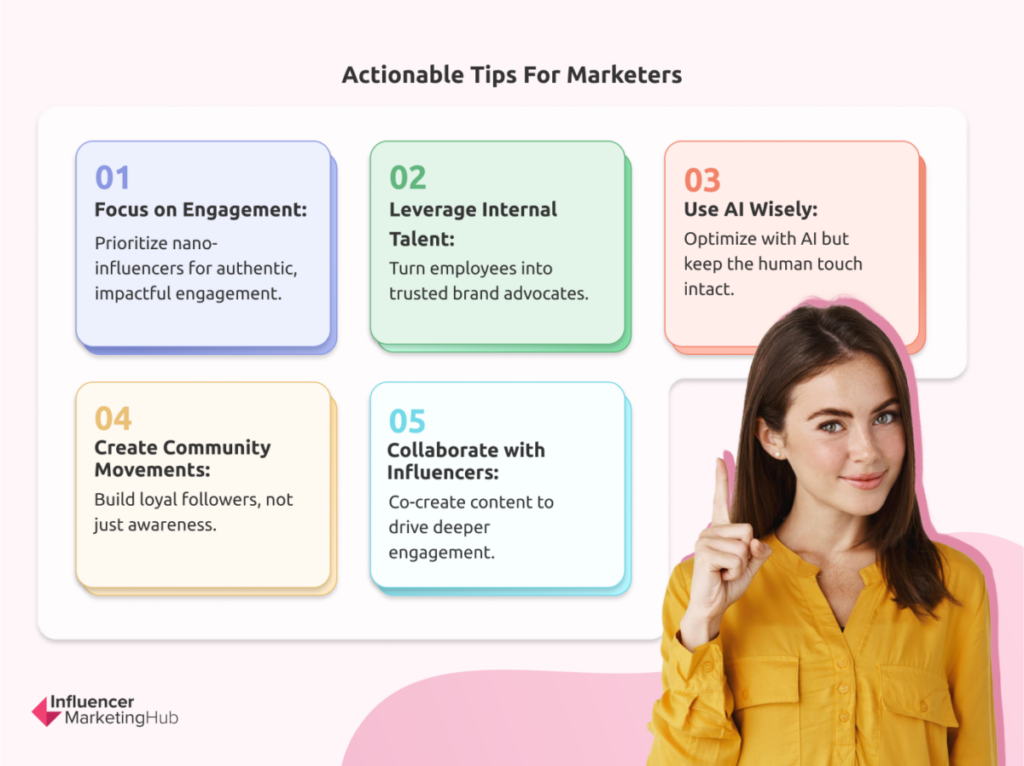
1. Move Beyond the Follower Count Obsession:
Stop chasing vanity metrics. The data shows that 53.4% of marketers are now shifting their focus towards nano-influencers because they deliver engagement that’s authentic, direct, and genuinely impactful. Think about it: would you rather have a celebrity shoutout to a million passive listeners or a respected industry voice whispering directly into the ears of decision-makers who hang on every word? Prioritize influence, not reach.
2. Build Your Own Influencers from Within:
Take a page out of IBM’s playbook. They didn’t just partner with external influencers; they turned their own employees into brand evangelists through structured programs and recognition systems like the “IBM Influencer” badge. Internal experts who are empowered to speak on behalf of your brand will always carry more credibility. If you’re not already turning your team into your most authentic influencers, you’re missing out on one of the most potent trust-building strategies.
3. AI is Your Wingman, Not Your Replacement:
Let’s face it, AI in influencer marketing can be a double-edged sword. Our survey data shows 54.8% of marketers are using AI to enhance efficiency, but they’re also wary of losing that human touch. The trick isn’t just in collecting data—it’s in turning that data into relatable, human-centric experiences that resonate on a deep level. Use AI to streamline and optimize but never at the cost of sacrificing your brand’s authenticity. Think of AI as your strategy assistant, not the face of your campaign.
4. The Politics of Influence: Learn from the Best
Political campaigns have nailed what most Fortune 500 brands are still struggling to grasp. They don’t just use influencers; they weaponize them. It’s not about flashy ads; it’s about creating movements, sparking conversations, and mobilizing communities. If your brand isn’t thinking of influencer marketing as a way to build not just awareness but a loyal tribe of advocates, then you’re playing checkers in a chess world. Be bold enough to transform your influencer marketing into a community movement.
5. Double Down on Thought Leadership and Content Co-Creation:
Collaboration is your most powerful tool in B2B influencer marketing. Look at Microsoft’s MVP Program—they didn’t just ask for endorsements; they co-created product content with their influencers. This approach has amplified Microsoft’s leadership in cloud and AI. The result? Engaged audiences and faster adoption rates. Marketers, take note: involve your influencers in content creation from the ground up—make them stakeholders, not just spokespeople.
If you want to stay ahead, it’s time to rethink your influencer playbook from the ground up.
Innovate your approach by embracing thought leadership. Integrate AI to supercharge your campaigns without losing that all-important human connection. And above all, aim to influence not just through content but through meaningful, authentic interactions that create true brand advocates.
To the marketers out there who still believe that influencer marketing is just a box to check—here’s your wake-up call. Adapt, evolve, and above all, be bold. Because in this game, if you’re not influencing change, you’re just following it.

